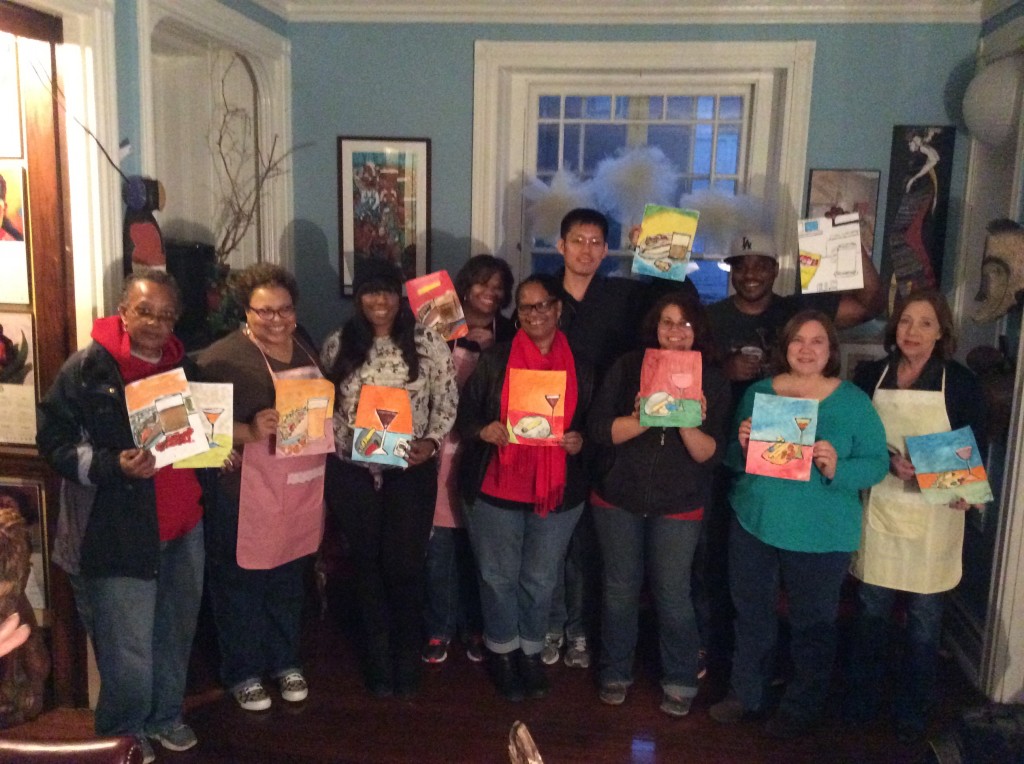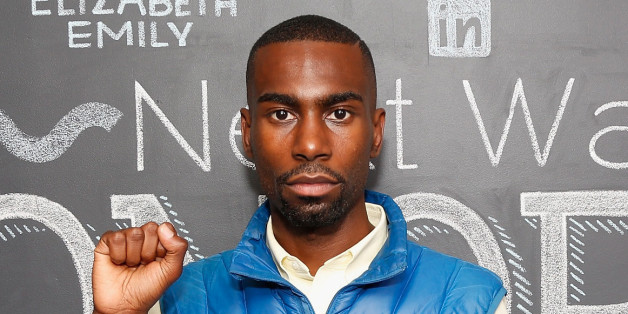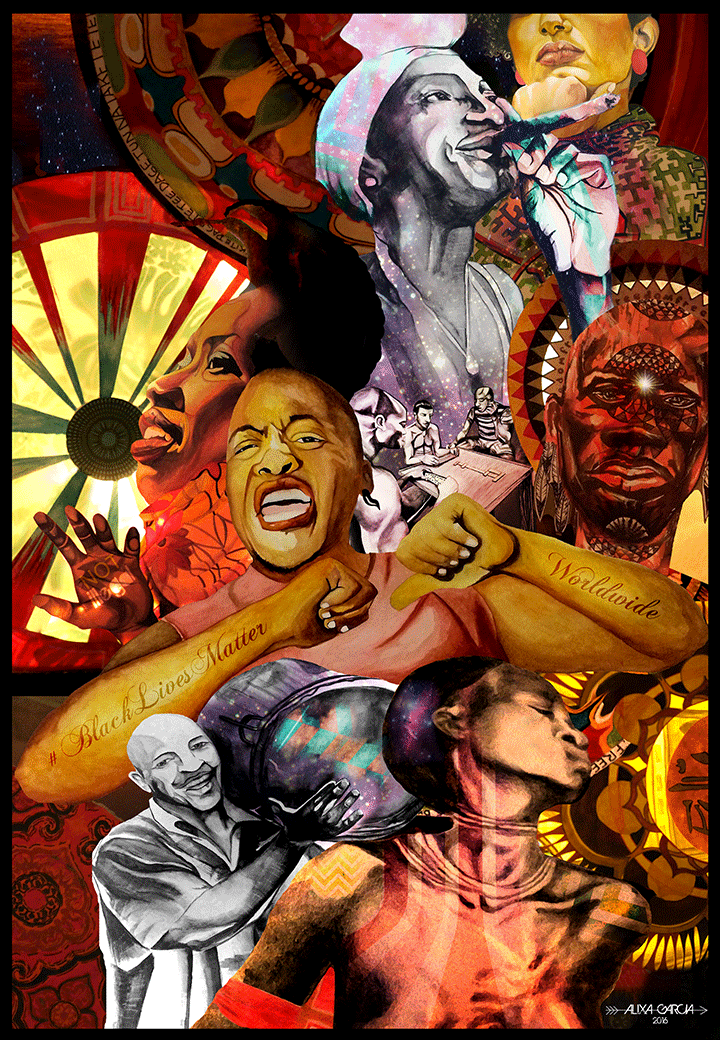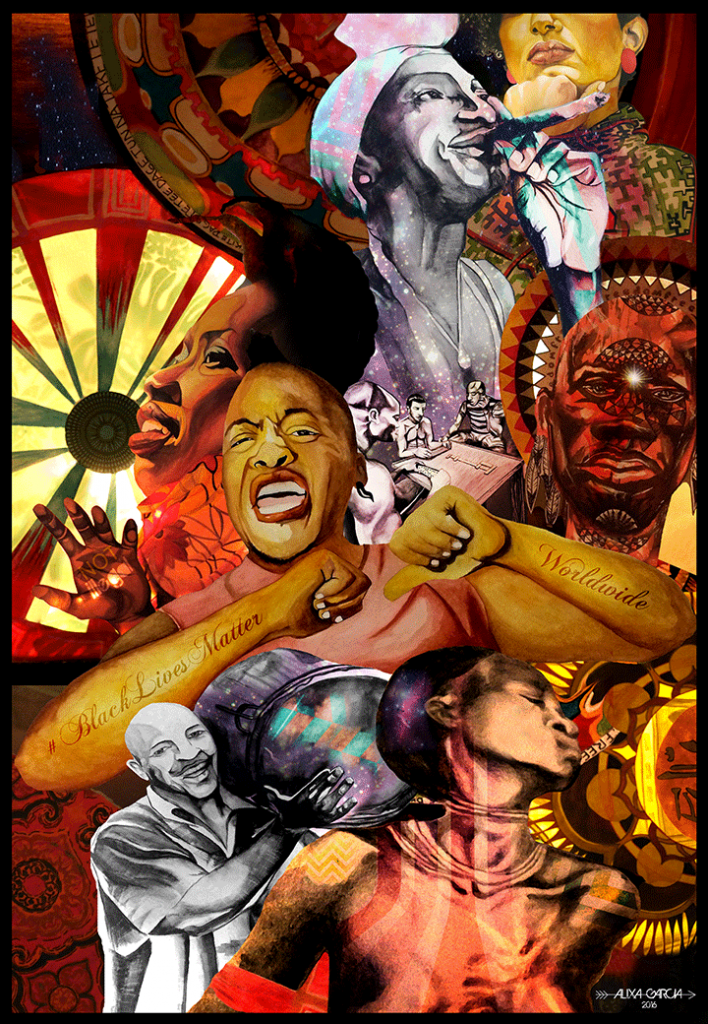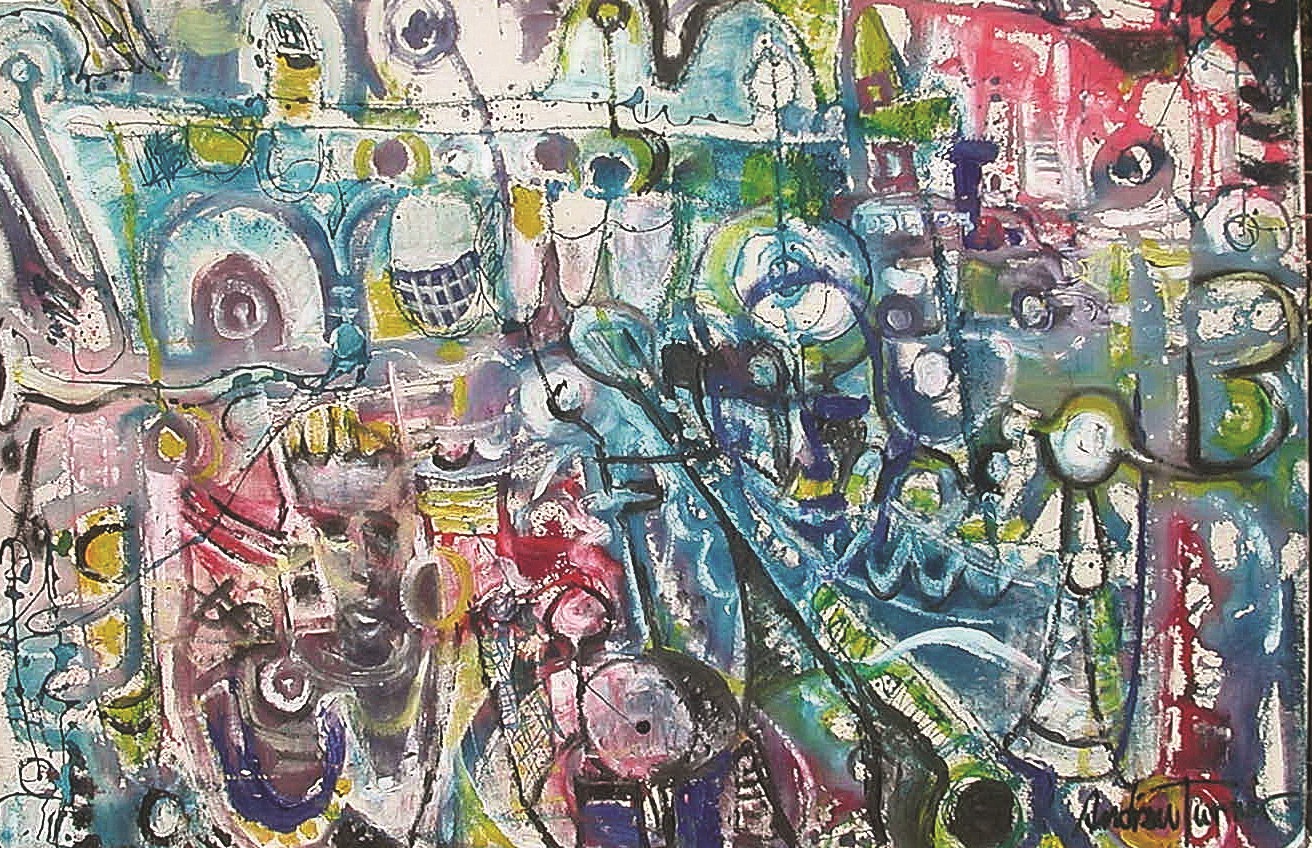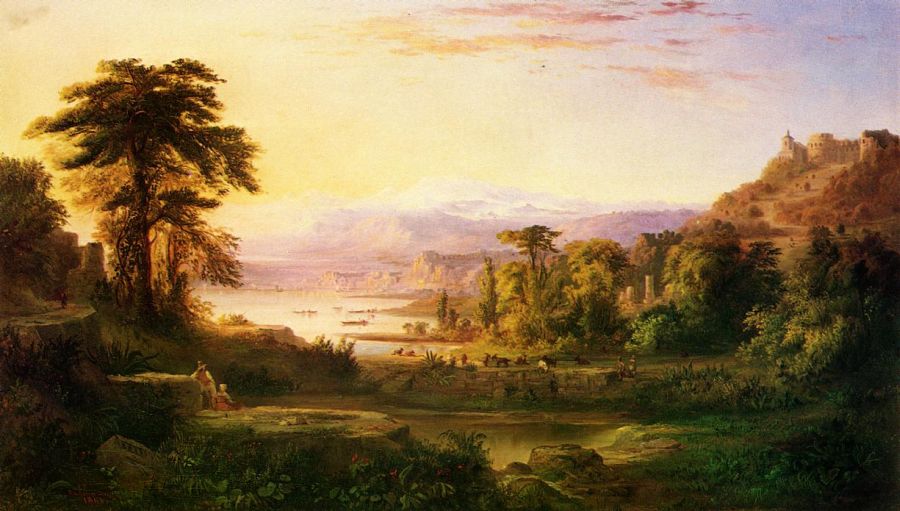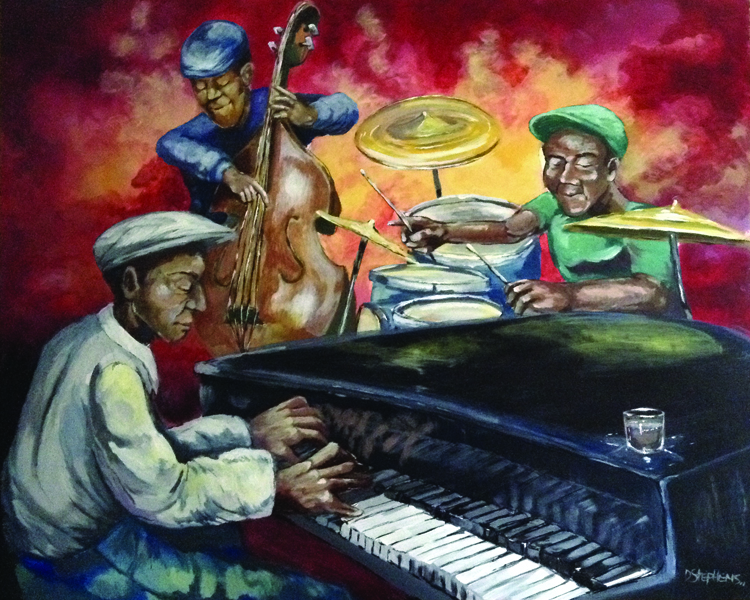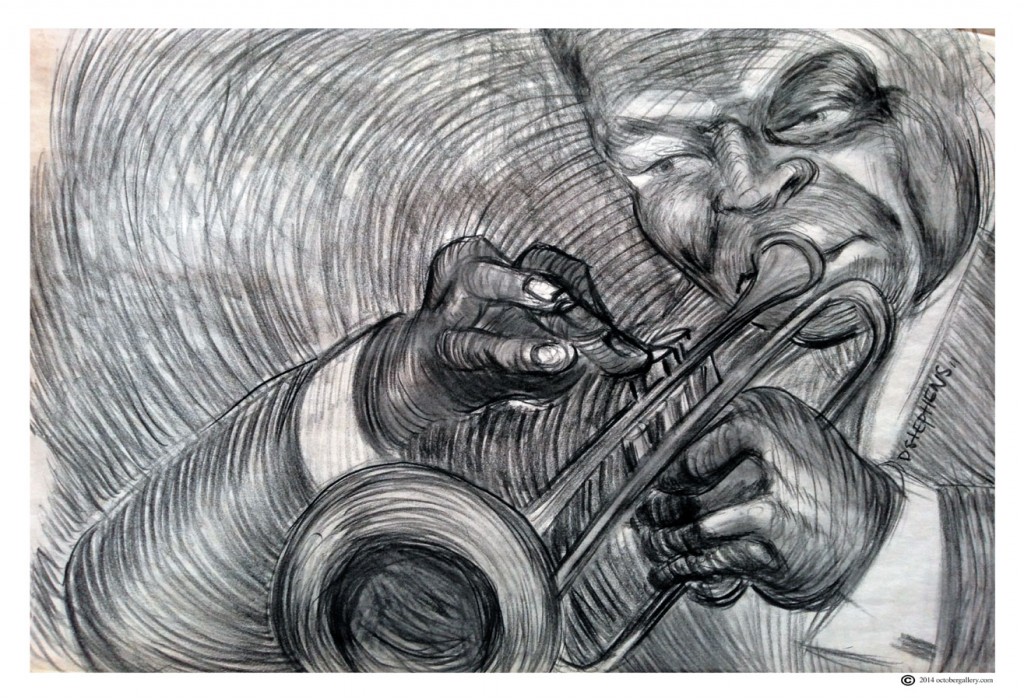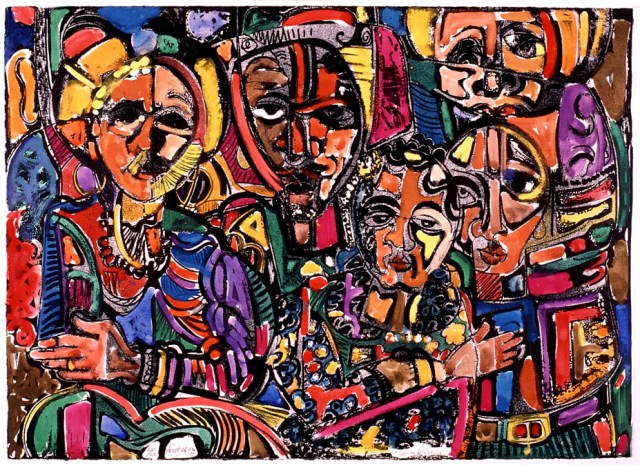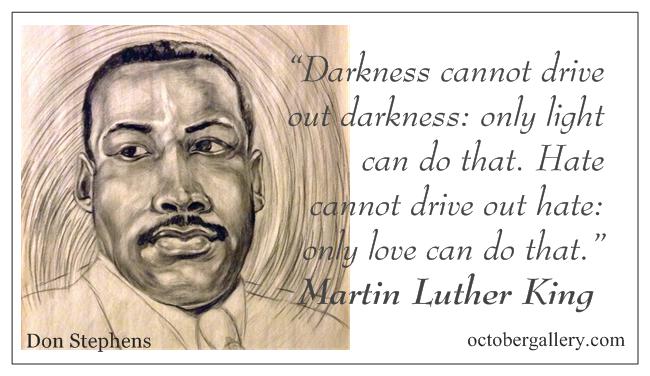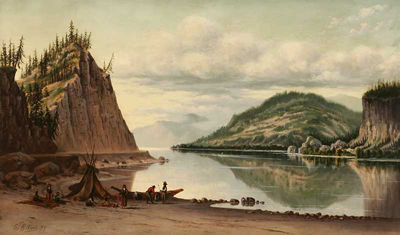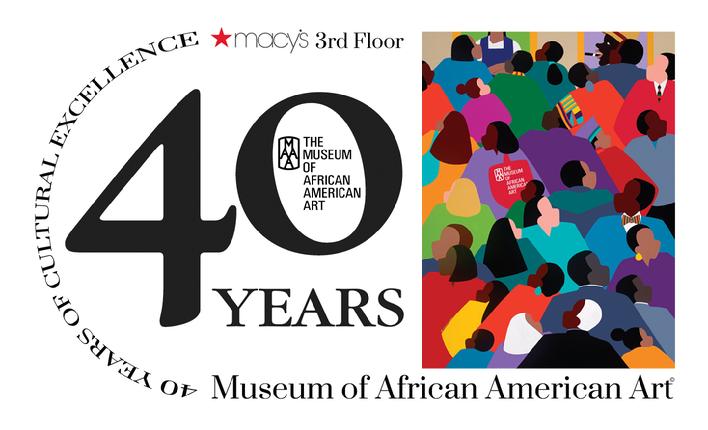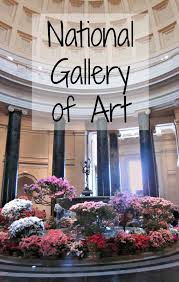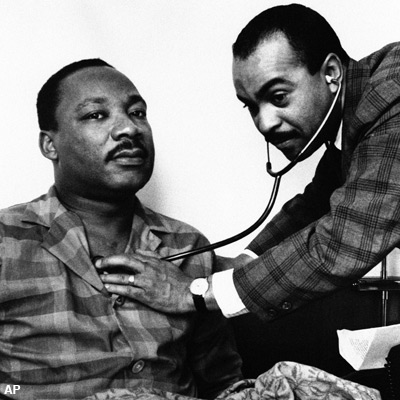‘I Am Running for Mayor of Baltimore’
Global Blackness and Diasporan Dopeness
Black Trans Lives Matter, Too
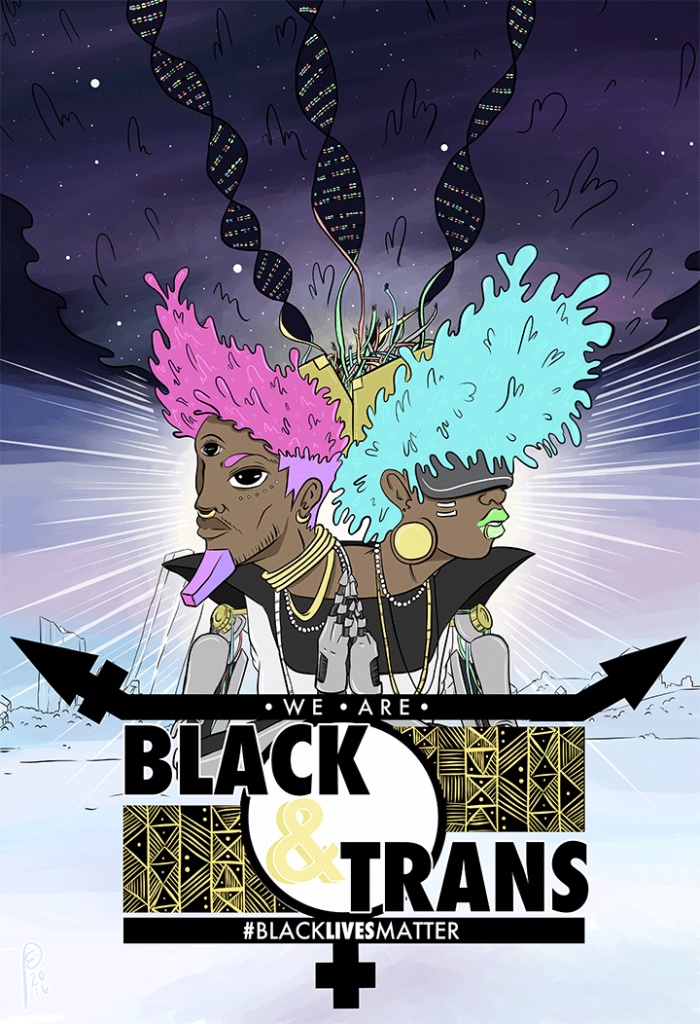
Cherno Biko
Brooklyn based award-winning media activist and human rights advocate.
Tragically, 2015 was the deadliest year on record for black trans and gender non conforming women with the total number of murder victims ranging from 21-25. Our average life expectancy is a paltry 35 years, less than half that of the average cisgender woman. The violence against folks like us is occurring at a rate that remains alarmingly high, and contributes to that shortened life expectancy. This unfortunate reality prompted me to join the larger #BlackLivesMatter movement, because we must declare that all black lives matter, including black trans folks.
Many of the causes of death have yet to be released, but from what is known, a majority of the black trans women lynched this year were either shot, burned, or stabbed to death while engaged in the sex trades. As I bear witness to these stories, I’ve begun contextualizing the violence against folks like us through the lens of Ida B. Wells’ A Red Record, a work of investigative journalism that tracked lynchings in the 19th and 20th century. Her legacy empowered me to utilize communication technologies like social media to lift up our stories.
In colonized lands across the globe, there is a war being waged on any black person who would dare to exist outside of the gender binary. But the struggle for our lives doesn’t begin and end with these acts of murder. The stigmatization and criminalization of trans people persisting in the law enforcement system, furthers the oppression faced by folks like us. We must continue elevating the conversation around the social and institutional violence and, in doing so, include the ways black trans people are disproportionately and uniquely affected. Also, the media often enables the stigma and discrimination already endured by trans people, by portraying us as less than human. Instead of being honorably covered when targeted by hate or malice, many outlets misgender and slander trans women of color in death, using mug shots, birth names, incorrect pronouns. Even worse, they speculate on so-called justifications for their murders – such as sex work, homelessness, and drug use, which removes the accountability from where it belongs: on anti-trans violence and oppression.
In order to know where we are going, we have to remember that from which we come; that our history predates the Transatlantic Slave Trade. My whole life was changed when I traveled to Ferguson with the Black Lives Matter freedom rides, in the aftermath of Michael Brown’s murder. Witnessing the power and resilience of queer and trans black women especially, gave me hope that this iteration of the movement for black lives would not fail to center our most vulnerable and precious members. I do believe that everyone has a role to play in creating a more just and loving world, I just wish people would stay in their own lanes. Eradicating systemic oppression should be the challenge of those who benefit from it’s bounty. In other words, ending racism is the responsibility of white folks.
After a lifetime involved in the movement, I’m convinced that instead of trying to eradicate white supremacy our main focus should be creating the kind of world we want to inhabit. We can no longer afford to hide behind the tenants of non violence and respectability, if those values do not require us to protect black trans girls at all costs. I often think about the resiliency of Eisha Love whom I affectionately named “The Girl Who Lived.” Her case was eerily similar to Cece McDonald, who was also charged with a felony crime for surviving a racist and transphobic attack. Whereas every breath a black trans person takes is an act of resistance, our primary objective should be survival by any means necessary.
I dream a world in which all black lives matter. A world where we are not poisoned by the water and genetically modified foods. I dream a world where our black bodies are not criminalized because of sex work or HIV/AIDS. I dream a world where we have complete and total access to the entire universe without barriers or borders. I envision a world without prisons and without police. I envision a world that supplies our basic needs like, housing and medical care for all people. I dream a world centered around black women because the black woman is god and black girls are magic. The role of the black queer and trans prophets leading this struggle for liberation is to usher in a new world order full of love, beauty, compassion and empathy.
Our unique perspective of inhabiting the space between masculine and feminine further equipped us to seek truth and often overlooked perspectives. Before western concepts of gender bankrupted our social capital, we served as the mediators, the healers and the griots. It’s my hope that in the future black trans folks will be loved, respected, included, paid, healthy and free. Simply, it’s my hope that #BlackTransLivesMatter, too.
Illustration by Ethan Parker
This post is part of the “Black Future Month” series produced by The Huffington Post and Black Lives Matter Network for Black History Month. Each day in February, this series will look at one of 29 different cultural and political issues affecting Black lives, from education to criminal-justice reform. To follow the conversation on Twitter, view #BlackFutureMonth.
The Art of Andrew Turner – Audio Book
Over the years, many artists have played a major role in the October Gallery story. One such artist was Andrew Turner.
Biography of Andrew Turner (1944-2001)
Andrew Turner was born in l944 in Chester, Pennsylvania. He was a graduate of Temple University’sTyler School of Art. His work has been featured in numerous solo exhibitions and group exhibitions in the United States and abroad. He taught art in grades K-12 in the Chester, Pennsylvania Public Schools and in correctional centers. His appointments include Artist-in-Residence and Curator, Deshong Museum, Chester, PA; Lecturer, Widener University; and Lecturer, Institute of Contemporary Art, University of Pennsylvania, Philadelphia, PA. He also toured and lectured in The People’s Republic of China. Collectors who hold Turner’s paintings include Woody Allen, Dr. Maya Angelou, ARCO Chemical Company, Bell Telephone Company, Dr. Constance Clayton, Will Smith, Danny Glover, Mr. and Mrs. Bill Cosby, Edie Huggins, Eric Lindros, Mr. and Mrs. Louis Madonni, Moses Malone, Penn State University, the artist formerly known as Prince, Mr. and Mrs. Harold Sorgenti, Swarthmore College, Mrs. Marilyn Wheaton, and Widener University’s Deshong Museum, just to name a few. His Philadelphia commissions include: WDAS FM (1996); Marco Solo, (written by J. Schwinn and G. Harlow, illustrated by Andrew Turner) Reverse Angle Productions, Inc. (1995); and Robin Hood Dell, Fairmount Park (1985).
The Masters-African American Art – Audio
Importance of African American Art
The Collecting of African American Art V: Collecting as a Way of Life
Ruth Fine, curator of special projects in modern art, National Gallery of Art, and Juliet Bethea, collector. In this event recorded on February 15, 2009, as part of the National Gallery of Art lecture series , Ruth Fine speaks with Washington, DC-based collector Juliet Bethea about her life–long passion for learning and what inspired her to begin acquiring art nearly 40 years ago. Bethea discusses how moving to Washington in 1967 after years of traveling abroad marked a turning point in her engagement with the arts. Through the strong community of artists connected to the Howard University community, Bethea developed a connection with the local art scene.
The Collecting of African American Art VII: David C. Driskell in Conversation with Ruth Fine
David C. Driskell, artist, collector, and emeritus professor of art history, University of Maryland at College Park, and Ruth Fine, consulting curator of special projects in modern art, National Gallery of Art. Highly respected as an artist, art historian, curator, and teacher, David C. Driskell’s life as a collector is less well known. In this event recorded on February 12, 2012, as part of the National Gallery of Art lecture series , David C. Driskell and Ruth Fine discuss publicly for the first time the expansive range of his art acquisitions, which he started to collect during his years as an art student at Howard University in Washington, DC. Among the treasures in Driskell’s collection are old master and modern European prints, antique rugs, African sculpture, and works by African American masters from the 19th century through the present.
200 Years African American Art Celebrating Dr. MLK Jr.
The Tone and Tenor show today focused on:
REPRESENT: 200 Years of African American Art & Celebrating Dr. Martin Luther King Jr
The show looked back at African American Art and the Final Journey of Dr. Martin Luther King through the eyes of others.
Joining The Tone and Tenor ‘bipartisan voices of the people” show to discuss the topic was:
In studio:
John Vick, Project Curatorial Assistant, Modern & Contemporary Art; Philadelphia Museum of Art. John is the Organizing Curator of the exhibit Represent: 200 Years of African American Art. He worked closely with Dr. Gwendolyn Dubois Shaw, Associate Professor of American Art, University of Pennsylvania, who serves as the Consulting Curator of the Exhibition.
Via Telephone:
Emily Schreiner, Berton Sallie Korman Associate Curator of Education for Family and Community Learning at the Philadelphia Art Museum.
Judge D’Army Bailey, Founder of the National Museum of Civil Rights, attorney, circuit court judge, civil rights activist, film actor and author of Mine Eyes Have Seen Dr. Martin Luther King Jr.’s Final Journey
Thanks to Sylvester Stallone and the movie Rocky Philadelphia’s Museum of Art has the most famous steps in the world.Vistors to the City of Brotherly Love make it a point to run the steps. Should they venture past the steps and through the doors one will learn that the museum is one of the most important in the United States, with a collection of more than 227,000 works of art. The Museum’s many galleries present painting, sculpture, works on paper, photography, decorative arts, textiles and architectural settings from Asia, Europe, Latin America and of course the United States. Its facility includes its Landmark main building Ruth and Raymond G Perelman Building, the Rodin Museum and two historic houses located in Fairmount Park the world’s largest urban park. If one was to venture through the doors you will come to realize that the Museum offers a wide variety of activities for the public including: programs, lectures, concerts, and special exhibits.
In the Honickman and Berman Galleries, ground floor, main building is the latest exhibit Represent: 200 Years of African American Art. Tone and Tenor will focuses the first segment of the show on Represent: 200 Years of African American Art
The last segment of the show will pays homage to the Dr. Martin Luther King Jr as we celebrate history birthday which was January 15th and the MLK National Day of Service our guest will be Judge D’Army Bailey founder of the National Civil Rights Museum, civil rights activist, film actor, attorney and author of Mine Eyes Have Seen Dr. Martin Luther King Jr.’s Final Journey. The National Civil Rights Museum is a privately owned complex of museums and historic buildings in Memphis, Tennessee, which traces the history of the Civil Rights Movement in the United States from the 17th century to the present. The museum is built around the former Lorraine Motel where Martin Luther King, Jr. was assassinated on April 4, 1968.
“SAMA Collects African American Art” exhibition – Grafton Brown
Collector Harriet Kelley discusses artist Grafton Brown for the audio tour for the exhibition, “SAMA Collects African American Art,” by Flutter & Wow for San Antonio Museum of Art.
The Museum of African American Art (Revised)
A profile of The Museum of African American Art, located in the Baldwin Hills Crenshaw Plaza.
The Collecting of African American Art X: Rodney Merritt Miller: Reflections on Collecting
Ruth Fine, curator (1972–2012), National Gallery of Art, and Rodney M. Miller, collector. In this conversation recorded on February 9, 2014, as part of The Collecting of African American Art, a series at the National Gallery of Art, Ruth Fine and Rodney M. Miller discuss his collection in all of its aspects—from his early interest in art to the development of his diverse interactions with contemporary artists, curators, and dealers. Miller explains the important effect that art has in chronicling and providing a more complete view of society.
“The Power of African-American Art”
State of the Re:Union has made it an annual tradition to commemorate Black History Month with a special episode exploring lesser known corners of African-American history. This year, SOTRU recognizes Black History Month through the lens of African-American art, the role it has played in social movements and everyday life, and why it matters both to the black community and the United States as a whole. From a poem celebrating Nina Simone and her powerful voice for social change, to the story of the surprising event that sparked the hip-hop cultural revolution, to unsung heroes of the culinary arts, SOTRU provides a rich hour of art as a window into African-American history, and how communities have been transformed by it.
10 Things You Didn’t Know About Dr. Walter P. Lomax Jr.
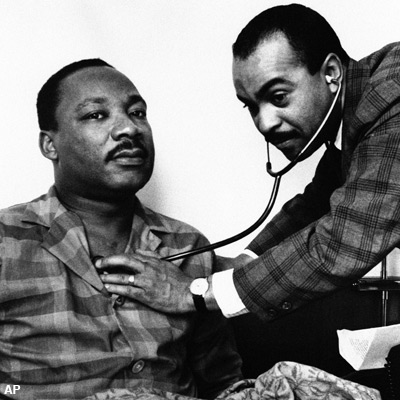
Dr. Martin Luther King, Jr., head of the Southern Christian Leadership Conference, sits up in his hotel room bed in Philadelphia, Feb. 10, 1968 while being examined by Dr. Walter Lomax, a Philadelphia physician. (AP Photo)
Last year we lost one of Philadelphia’s truly great men. He would have been 82 this week.
A version of this story ran last October.
On October 10, 2013, at 8:30 a.m., 81-year-old Dr. Walter P. Lomax Jr. passed away. “So what?” you ask. “What’s the big deal? Don’t old men die every day?”
The big deal, I answer, is that he wasn’t just an old man. The big deal is that he was and is a great man.
Dr. Lomax was a prominent physician, prosperous entrepreneur, and selfless philanthropist. The youngest of four children and a graduate of La Salle University and Hahnemann University Hospital, he opened his first medical office in a row house near his South Philly family home in 1958.
That small-scale clinic expanded over the years to six top-notch medical centers with 22 physicians who provided quality care regardless of income.
A year after establishing Lomax Health Systems (LHS) in 1982, he continued to display his concern for the health of the less fortunate by establishing Correctional Healthcare Solutions, which ultimately treated inmates in 70 jails in 10 states. He proceeded on his quest to help those in need when, in 1989, LHS partnered with an out-of-state company to create Healthcare Management Alternatives, Inc. (HMA), which dispensed health care to inner city Medicaid recipients in South and West Philly.
He served on the Board of Directors of the Philadelphia Orchestra, Universal Companies, and Powernomic Enterprise Corp., which is an aquaculture entity that propagates, cultivates and markets fish, seafood and plants, and is an IPO listed on NASDAQ.
He also was the chairman of the Lomax Companies, which is the corporate umbrella for four companies including real estate investment firm Lomax Real Estate Partners, technology businesses Prime Image and MyArtistDNA, and media enterprise 900AM-WURD. It was in 2003 that he and his wife purchased WURD, which is the only black-owned and -operated radio station in Pennsylvania. They did this, in their own words, “to ensure that Philadelphia would remain a powerful voice in the living history of conscious black radio.”
During that same year, he and she formed The Lomax Family Foundation to make funds available to non-profit organizations engaged in health, educational, artistic, and cultural programs for the African-American community.
But more than any of that impressive business success and community service, he was —first and foremost —a loving family man, the affectionate husband of Beverly for more than 50 years, the devoted father of six, namely Bennett, Charles, Claire, Laura, Sara, and W. Thomas, and the doting grandfather and great-grandfather of 15.
In addition and most notably, he was a conscious African-American who empowered his widespread village by giving powerful voice to the voiceless in active pursuit of powerful solutions.
A lot of his greatness chronicled above is publicly known. But here are 10 things you might not have known about this great man:
1. When he opened his South Philly clinic in 1958, one of his first calls was from a friend whose neighbor was ill. After rushing to make the “house call” (yes – many doctors did that then), the sickly white woman who opened the door took one look at him, realized he was a black physician, then rudely smirked, derisively chuckled, and abruptly slammed the door in his face. Although he was humiliated and angry, he realized that getting even was the only solution. Hundreds of awards, thousands of patients and millions of dollars later, I wonder who got the last laugh.
2. He traveled to Africa several times to raise his consciousness and to promote black self-help business opportunities.
3. In a 1994 expression of real black power, he bought the plantation in King William County, Virginia, where his great-grandmother had been enslaved and where hundreds of other black women, men and children had been held in brutal bondage since 1732.
4. One of his patients in 1968 was Rev. Dr. Martin Luther King Jr. who, while traveling through town, contracted an upper respiratory infection. Although he was cured at the helpful hands of Dr. Lomax in South Philly, King died just two months later at the hurtful hands of an assassin in the South.
5. He was formally and officially honored in 1998 by the Georgia House of Representatives in SR 764.
6. A local community activist and her family were about to become homeless following a pending eviction. With no assistance available from any public or private source, she called Dr. Lomax – a man she did not know personally. She contacted him only because she had heard that he was a rich black man with a heart. After getting through his secretaries, she reached him. Before she could finish her tale of woe, he told her to come and pick up the check. He saved the lives of that woman and her children on that day. And the only thing he demanded in return was her silence. His humility is legendary.
7. With his donation of nearly $20,000 in the 2008 election cycle, he became one of the early financial contributors to the presidential candidacy of (then pro-black, then pro-poor people, then pro-peace and then pro-civil liberties) Senator Barack Obama.
8. In 1994, he wrote a scholarly and groundbreaking medical article in The Journal of The National Medical Association (NMA) entitled “Medicaid Managed Care in Pennsylvania.” The NMA is an organization founded in 1895 “to advance the art and science of medicine for people of African descent …”
9. Lincoln University in Pennsylvania honored him in 2004 with a Ph.D. in science.
10. At a private meeting in his Chalfont office in 2011, he told “The Angriest Black Man In America” (aka Michael Coard) to continue voicing constructive rage on WURD’s Radio Courtroom program because our people need to know and to fight until the victory is won. “Agitate! Agitate! Agitate!” is exactly what he and Frederick Douglass said.
You can keep the legacy of the great Dr. Lomax alive by finishing what he started. You can do this by becoming a member of WURD’s “900 In 90 Club.” Simply log on to www.900amwurd.com or call 215-425-7875. And keep “Dr. Greatest Personified” in your memory on July 31st by whispering to yourself “Happy Birthday, sir.”
Michael Coard’s radio show, “The Radio Courtroom,” airs at noon on Sundays and Wednesdays. It can be heard locally on WURD 900 AM and on the Internet at900amwurd.com.


